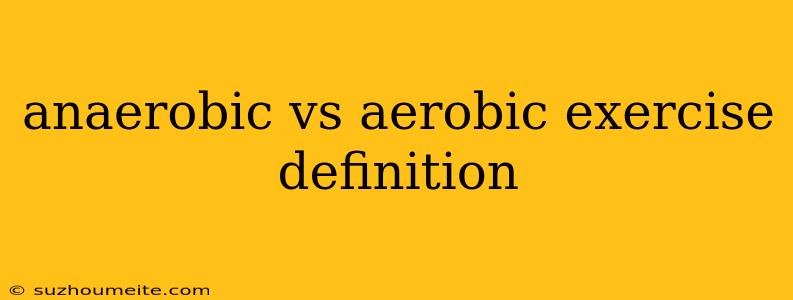Anaerobic vs Aerobic Exercise: Definition and Differences
Both anaerobic and aerobic exercises are essential components of a well-rounded fitness routine, but they differ significantly in their physiological effects and benefits.
Aerobic Exercise
Definition: Aerobic exercise, also known as cardio, is any activity that uses oxygen to fuel the body. It involves continuous, rhythmic movements that elevate your heart rate and breathing for an extended period.
Examples:
- Running
- Swimming
- Cycling
- Dancing
- Rowing
Benefits:
- Improved cardiovascular health: Strengthens the heart and lungs, reducing the risk of heart disease and stroke.
- Weight management: Burns calories, helping with weight loss or maintenance.
- Increased endurance: Improves your ability to perform sustained physical activity.
- Reduced stress and improved mood: Releases endorphins, which have mood-boosting effects.
Anaerobic Exercise
Definition: Anaerobic exercise refers to physical activity that occurs without oxygen. It involves short bursts of intense effort that push your body to its limits.
Examples:
- High-intensity interval training (HIIT)
- Weightlifting
- Sprinting
- Plyometrics (jump training)
Benefits:
- Increased muscle mass and strength: Builds muscle fibers, improving your strength and power.
- Improved bone density: Helps to strengthen bones, reducing the risk of osteoporosis.
- Enhanced metabolism: Boosts your metabolic rate, which can help you burn more calories even when you're not exercising.
- Improved athletic performance: Enhances speed, power, and agility.
Key Differences:
| Feature | Aerobic Exercise | Anaerobic Exercise |
|---|---|---|
| Oxygen use | Uses oxygen | Does not use oxygen |
| Intensity | Moderate to high | High intensity, short bursts |
| Duration | Longer periods | Short intervals |
| Primary energy source | Fat | Glucose |
| Primary benefits | Cardiovascular health, weight management, endurance | Muscle growth, strength, power |
Conclusion
Both anaerobic and aerobic exercises are important for overall health and well-being. Incorporating both types of exercise into your routine can provide a comprehensive fitness program that addresses various aspects of health.
Consult with a healthcare professional before starting any new exercise program.
